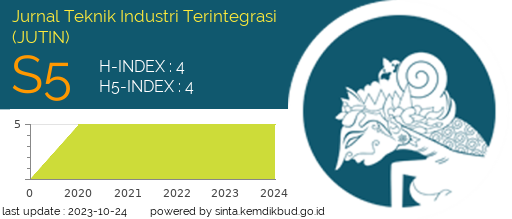Teknologi Hijau Pengelolaan Bijih Nikel Laterit (Nickel Laterite Spent Ore Treatment “Green Technology”)
DOI:
https://doi.org/10.31004/jutin.v6i3.16461Abstract
In pace with the rising output of electric vehicles, the nickel sector is still developing quickly. In 2022, Indonesia will manufacture 500,882.27 tons of ferro nickel, of which 197,758 tons, or 30.01%, will be able to be sold. Along with the growth of nickel mines comes technological advancements, one of which is the ability to manage wasted ore, a waste product of the nickel refining process. With the help of this study, used ore will be transformed into a useful product that can be used to control the environment. Laboratory scale testing, field scale tests, and toxicity tests (TCLP and LD50) are the techniques used. Testing for toxicity and planting on 14 tonnes of wasted ore, a byproduct of hydrometallurgical heap leaching. Limestone or a combination of biolite, agromax, and ND-201® were used to neutralize the spent ore and Fe residue composites during the process. This seeks to make the leftovers from the leaching process, the resulting runoff water, and the plants that can come from it edible. According to the test results, processed spent ore is a harmless substance that does not fall under the B3 waste category and may be utilized as an excellent planting medium for perennials and food plants. Based on BPOM quality criteria in Law No. 23 of 2017, the results of food laboratory testing revealed that food crops grown through the planting procedure utilizing discarded ore media were suitable for eating.Downloads
Published
2023-07-31
How to Cite
Maharani, R. A. S. ., & Muin, Z. (2023). Teknologi Hijau Pengelolaan Bijih Nikel Laterit (Nickel Laterite Spent Ore Treatment “Green Technology”). Jurnal Teknik Industri Terintegrasi (JUTIN), 6(3), 661–678. https://doi.org/10.31004/jutin.v6i3.16461
Issue
Section
Articles of Research
License
Copyright (c) 2023 Rizky Aisyah Septi Maharani, Zulkarnaen Muin

This work is licensed under a Creative Commons Attribution-ShareAlike 4.0 International License.



